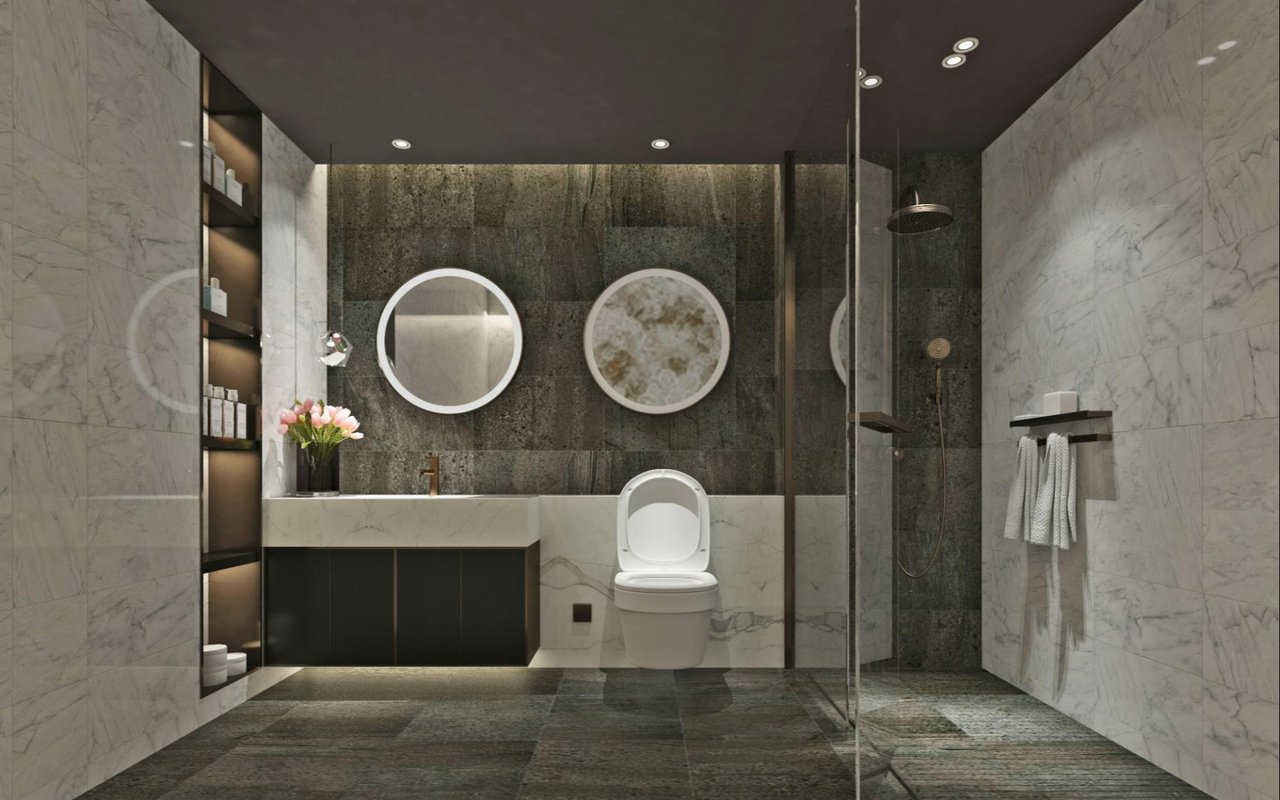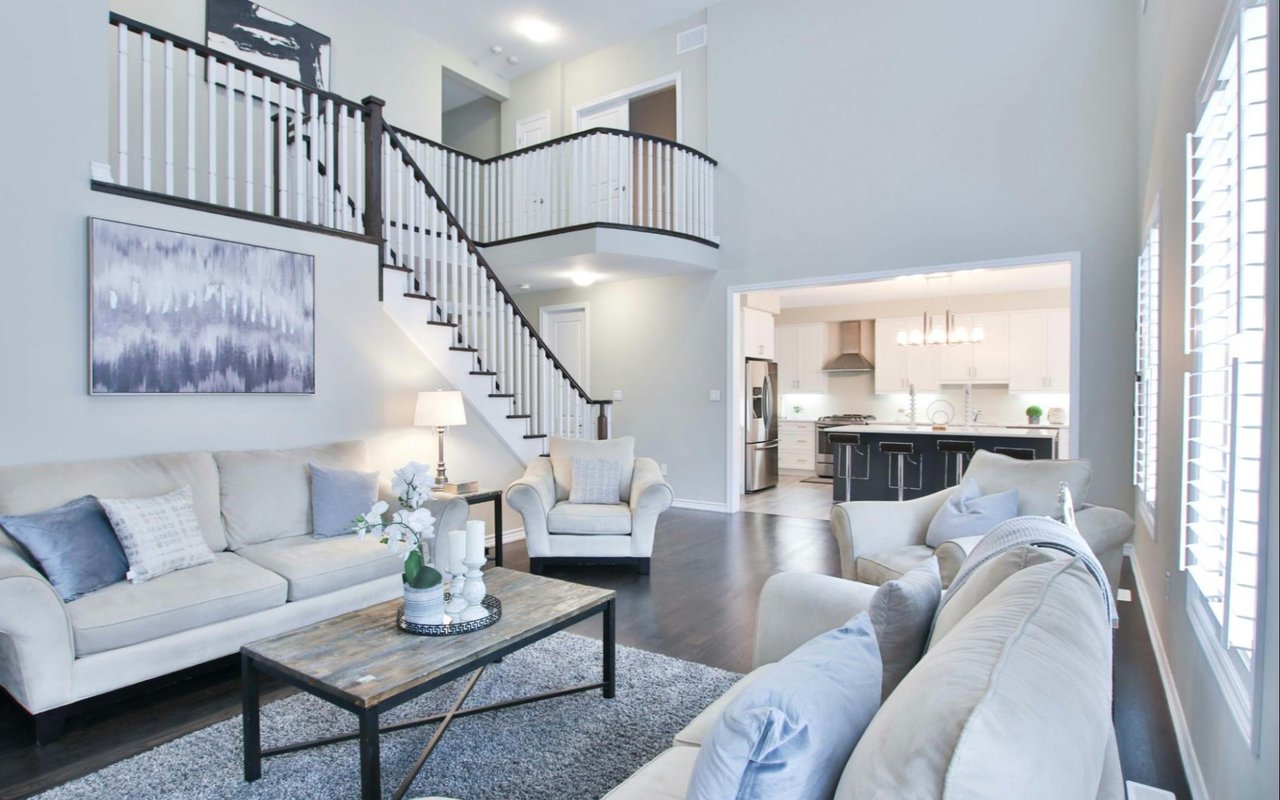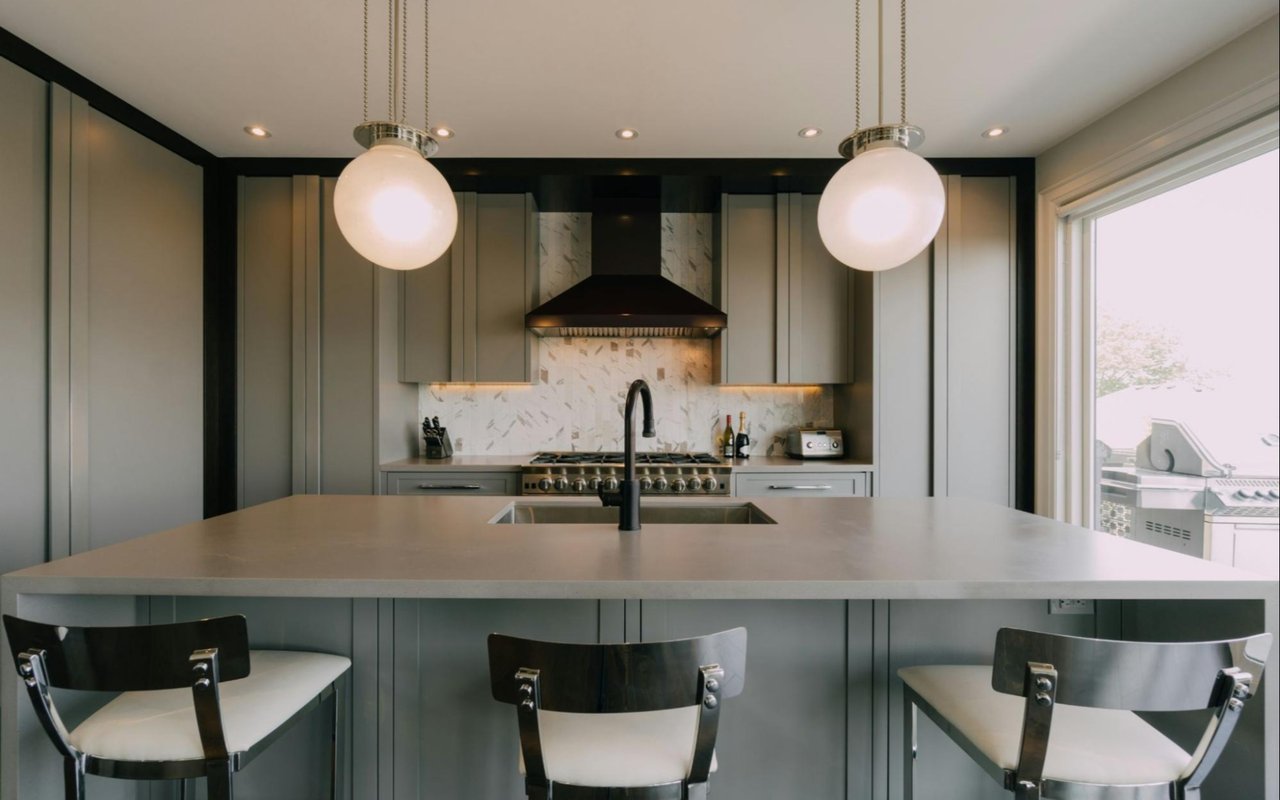Choosing the right paint tones for your home can transform the atmosphere of every room. The color of your walls can impact your mood, create a sense of space, and complement the furniture or design elements you already have in place. This guide explores the science of color, providing practical advice for selecting tones that suit each space in your home. Understanding how colors interact with light, space, and psychology will make it easier to choose paint that creates the perfect ambiance.
Understanding color psychology
Color psychology refers to the way different colors affect our emotions and perceptions. While personal preferences play a role, research shows that specific tones generally produce similar effects on most people. Understanding this can guide your paint choices for various rooms.
Warm colors: Red, orange, and yellow are known as warm colors. These hues tend to evoke energy, excitement, and warmth. They are great for social spaces like living rooms and kitchens where you want to encourage conversation and activity.
Cool colors: Blue, green, and purple are cool colors. They are calming, serene, and peaceful, making them ideal for bedrooms or spaces meant for relaxation.
Neutral colors: Neutrals like beige, gray, white, and taupe offer versatility. These colors adapt to various design styles and make a room feel open and airy. They are perfect for communal spaces, hallways, and entryways.
Using color psychology, homeowners can create specific moods in different parts of the house, from energizing spaces to calm retreats.
Warm colors: Red, orange, and yellow are known as warm colors. These hues tend to evoke energy, excitement, and warmth. They are great for social spaces like living rooms and kitchens where you want to encourage conversation and activity.
Cool colors: Blue, green, and purple are cool colors. They are calming, serene, and peaceful, making them ideal for bedrooms or spaces meant for relaxation.
Neutral colors: Neutrals like beige, gray, white, and taupe offer versatility. These colors adapt to various design styles and make a room feel open and airy. They are perfect for communal spaces, hallways, and entryways.
Using color psychology, homeowners can create specific moods in different parts of the house, from energizing spaces to calm retreats.
Assessing lighting in your space
Lighting plays a crucial role in how paint colors appear. Natural and artificial light can significantly change a color's tone. Before choosing a paint, consider the type and amount of light in the room.
Natural light: Rooms with ample sunlight tend to make colors look brighter and more vivid. Warm shades become even more intense, so choosing softer or muted colors for sunny rooms is often better. A cool tone, like a soft blue or green, can balance out the warmth of sunlight.
Artificial light: Depending on the type of bulbs you use, artificial lighting can make colors appear warmer or cooler. Incandescent bulbs cast a yellowish light that warms up colors, while fluorescent bulbs tend to have a cooler, bluish tone. Consider how your lighting will affect the paint color at different times of the day.
Direction of light: North-facing rooms often have cooler light, which can make some colors appear more muted or dull. In these rooms, choosing warm tones can offset the coolness. South-facing rooms get more sunlight and are generally better suited for cooler tones or neutrals.
By observing how light affects the space throughout the day, homeowners can choose paint colors that enhance the room’s natural or artificial lighting.
Natural light: Rooms with ample sunlight tend to make colors look brighter and more vivid. Warm shades become even more intense, so choosing softer or muted colors for sunny rooms is often better. A cool tone, like a soft blue or green, can balance out the warmth of sunlight.
Artificial light: Depending on the type of bulbs you use, artificial lighting can make colors appear warmer or cooler. Incandescent bulbs cast a yellowish light that warms up colors, while fluorescent bulbs tend to have a cooler, bluish tone. Consider how your lighting will affect the paint color at different times of the day.
Direction of light: North-facing rooms often have cooler light, which can make some colors appear more muted or dull. In these rooms, choosing warm tones can offset the coolness. South-facing rooms get more sunlight and are generally better suited for cooler tones or neutrals.
By observing how light affects the space throughout the day, homeowners can choose paint colors that enhance the room’s natural or artificial lighting.
Choosing the right color for each room
To choose colors for a room, consider its purpose, the amount of natural and artificial light it receives, and the mood you want to create. Ensure the colors complement your furniture and overall design style. Each room in your home serves a different function, so it’s important to select colors that reflect its purpose and mood. Below are tips for selecting paint colors based on the room’s function and atmosphere.
Living room
The living room is often the hub of the home—a place where the family gathers, guests are entertained, and relaxation happens. To create a warm and welcoming environment, consider using neutral tones as a base, such as soft grays or beiges. You can incorporate accent colors like rust, mustard yellow, or deep greens to add interest and personality.
Deep blue or charcoal walls can add drama and sophistication for those seeking a bolder look, especially in rooms with ample natural light. Alternatively, using lighter, warmer tones like peach or pale yellow can create a cozy and inviting atmosphere.
Deep blue or charcoal walls can add drama and sophistication for those seeking a bolder look, especially in rooms with ample natural light. Alternatively, using lighter, warmer tones like peach or pale yellow can create a cozy and inviting atmosphere.
Kitchen
Kitchens are typically high-activity spaces that benefit from energetic and uplifting colors. Warm hues like soft yellows, terracotta, or light greens can invigorate the space. These shades add warmth without being overwhelming, making them ideal for family meals and social gatherings.
White or cream tones are also popular in kitchens for their clean, timeless appearance. These neutrals create a fresh and open feel, which can make even smaller kitchens seem larger. Accent colors can be introduced through backsplashes, countertops, or cabinets, adding character without overwhelming the space.
White or cream tones are also popular in kitchens for their clean, timeless appearance. These neutrals create a fresh and open feel, which can make even smaller kitchens seem larger. Accent colors can be introduced through backsplashes, countertops, or cabinets, adding character without overwhelming the space.
Bedroom
The bedroom is a retreat for rest and relaxation, so calm and soothing colors work best here. Cool tones like soft blues, muted greens, or pale purples promote tranquility and are perfect for a restful night’s sleep. Pastel versions of these shades can create a serene environment without feeling too cold.
For those who prefer warmer colors, earthy tones like beige, taupe, or soft peach can evoke warmth while maintaining a peaceful vibe. Darker tones, such as navy or charcoal, can add a sense of coziness, particularly when balanced with lighter bedding and décor.
For those who prefer warmer colors, earthy tones like beige, taupe, or soft peach can evoke warmth while maintaining a peaceful vibe. Darker tones, such as navy or charcoal, can add a sense of coziness, particularly when balanced with lighter bedding and décor.
Bathroom
Bathrooms often benefit from light, fresh colors that create a sense of cleanliness and openness. Pale blues, greens, or grays are excellent choices, as they evoke the calming feel of water and nature. These hues can make a small bathroom feel more spacious and airy.
White remains a popular choice for bathrooms, as it conveys purity and simplicity. However, to avoid a sterile look, consider adding contrast with darker accents, such as navy towels or black fixtures. Soft lavender or blush tones can also work well for a more inviting and tranquil feel.
White remains a popular choice for bathrooms, as it conveys purity and simplicity. However, to avoid a sterile look, consider adding contrast with darker accents, such as navy towels or black fixtures. Soft lavender or blush tones can also work well for a more inviting and tranquil feel.
Home office
Productivity and focus are key in a home office, so choose colors that stimulate without distracting. Muted greens or blues can create a calming yet energizing space, ideal for focus. These shades are also known to reduce stress, which can help when dealing with work tasks.
Alternatively, light grays or beige tones offer a neutral backdrop that won’t compete with your décor or office furniture. Consider warm but muted tones like soft coral or pale yellow for a more energizing space.
Alternatively, light grays or beige tones offer a neutral backdrop that won’t compete with your décor or office furniture. Consider warm but muted tones like soft coral or pale yellow for a more energizing space.
Harmonizing colors throughout the home
While each room has its own unique function, it’s essential to create a cohesive flow throughout the house. This doesn’t mean every room needs to be the same color, but it’s helpful to choose tones that complement one another.
One approach is to stick to a consistent color palette across the entire home. For example, you could use varying shades of blue or green in different rooms. This creates a sense of harmony while still allowing each space to have its own personality.
Another option is to choose a neutral base color for common areas like hallways, living rooms, or entryways and then incorporate bolder or more personal colors in bedrooms, offices, or bathrooms. This balance allows for individual expression without clashing from one room to another.
One approach is to stick to a consistent color palette across the entire home. For example, you could use varying shades of blue or green in different rooms. This creates a sense of harmony while still allowing each space to have its own personality.
Another option is to choose a neutral base color for common areas like hallways, living rooms, or entryways and then incorporate bolder or more personal colors in bedrooms, offices, or bathrooms. This balance allows for individual expression without clashing from one room to another.
Sample and test your paint colors
One of the most essential steps in choosing the right paint tone is to test it in the actual room. Paint samples on a few walls and observe how the color looks at different times of the day. Natural and artificial light will affect how the color appears, so it’s important to live with the sample for a few days before making a final decision.
Sampling can also help you see how the paint works with your furniture, flooring, and décor. If you’re choosing bold or dark colors, testing a sample first ensures you’ll love the final result.
Sampling can also help you see how the paint works with your furniture, flooring, and décor. If you’re choosing bold or dark colors, testing a sample first ensures you’ll love the final result.
Bringing it all together: Creating a cohesive and inviting home
Choosing paint tones for every room involves understanding the science of color and how it interacts with light, space, and emotion. By considering factors like color psychology, lighting, and the function of each room, homeowners can create spaces that reflect their personal style while enhancing comfort and mood. From cool, calming hues in bedrooms to warm, welcoming tones in living areas, the right paint choice can make all the difference in creating a home that feels just right.
If you're looking for expert guidance in the Sarasota real estate market, reach out to Melissa Gissinger. With her extensive knowledge and dedication to client satisfaction, she can help you navigate the buying or selling process with ease. Contact Melissa today to start your journey toward finding your perfect home in Sarasota!
If you're looking for expert guidance in the Sarasota real estate market, reach out to Melissa Gissinger. With her extensive knowledge and dedication to client satisfaction, she can help you navigate the buying or selling process with ease. Contact Melissa today to start your journey toward finding your perfect home in Sarasota!




